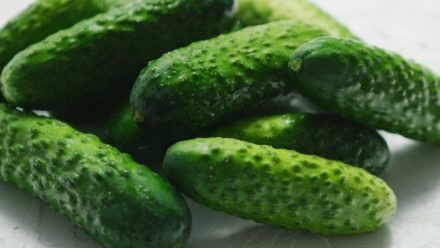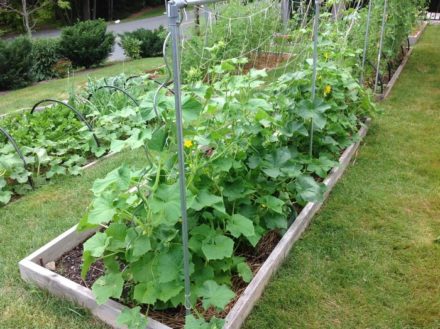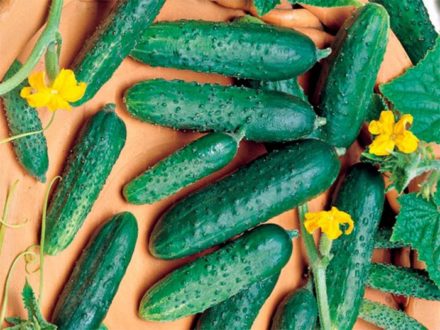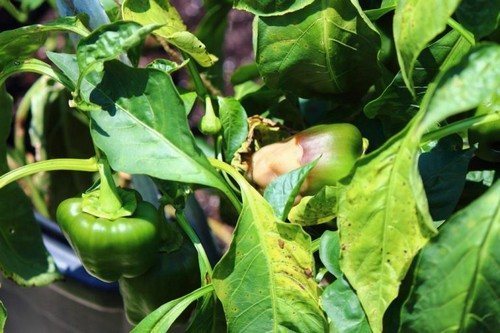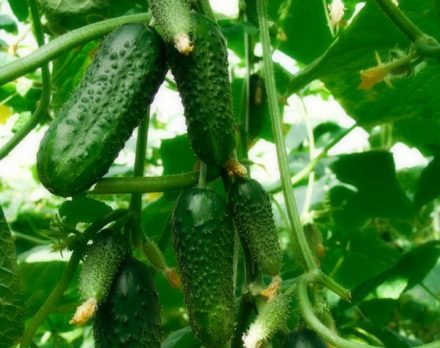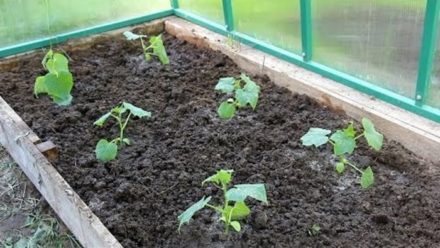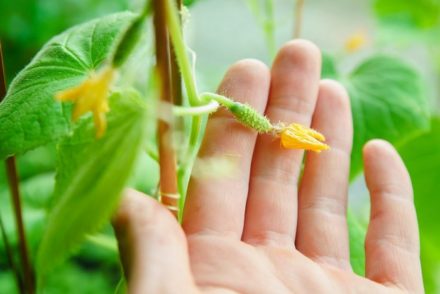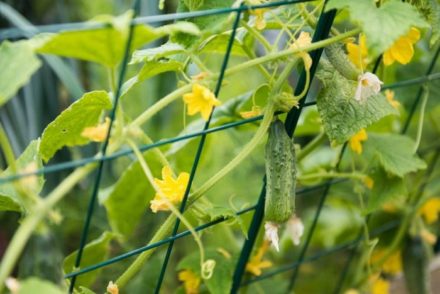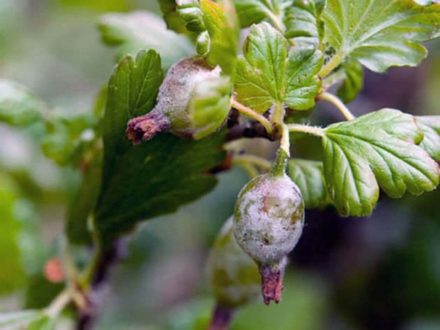Curling of cucumber leaves is the main sign that mistakes were made during the cultivation of the crop or that the plant was affected by diseases or pests. In order not to lose the harvest, you need to know the causes and ways to solve the problem.
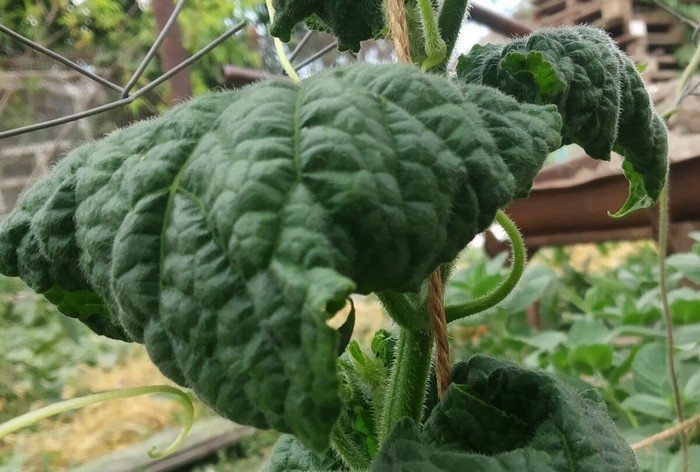
Lack of moisture
The main and most harmless reason for leaf curling is a lack of moisture or too dry weather. It is worth remembering that the soil must be moistened to a depth of at least 10 cm, otherwise the green part of the plant will begin to dry out and curl. In order to solve the problem and prevent its occurrence, the following measures are taken:
- it is necessary to restore the optimal water balance of the soil, while avoiding excessive waterlogging;
- When growing cucumbers in a greenhouse, it is necessary to maintain high air humidity. To do this, bushes and walls are periodically sprayed with a spray bottle.

The main indicator that the leaves have curled due to drought is that they begin to dry out and fall off the stems.
Nutrient deficiencies
Deformation of the leaf blade on cucumbers can also occur due to the fact that the plant lacks nutrients.
If the leaves curl inward but do not change color or dry out, this may be due to a lack of nitrogen in the soil. In such plants, the central vein grows faster than the leaf blade. To help cucumbers recover, it is necessary to fertilize them with nitrogen fertilizers. Urea or ammonium nitrate is well suited for such purposes.
If the leaves curl outward without changing color and density, then there is a lack of potassium. To solve the problem, water the soil with a solution of ash or potassium salt.
Sunburn or hypothermia
If the plant was exposed to low temperatures or, on the contrary, was in the scorching sun, then there is a possibility that the leaves will begin to turn yellow and wrinkle. To help cucumbers, they must be protected from exposure to adverse weather conditions.
When growing seedlings and placing cucumbers in a greenhouse, do not allow them to come into contact with glass, as it quickly heats up or cools down. If the crop is grown in open ground, then it is recommended to build a greenhouse for it from plastic film.
Pests
Even with proper plant care, insects cannot be ruled out, which can cause leaves to curl and yield loss. Most often, cucumbers are affected by aphids or spider mites. It is very easy to identify this problem. To do this, you need to look at the back of the leaf: if the cucumbers are susceptible to pests, then they will be clearly visible on the surface.
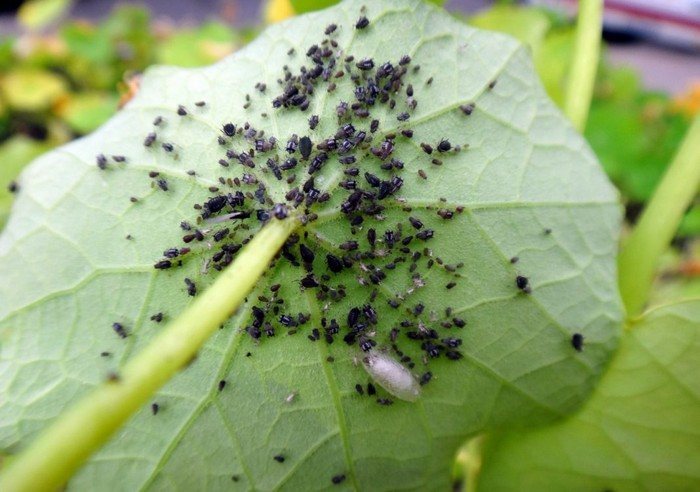
Insects take microelements necessary for growth from the plant, and are also carriers of serious diseases.You can get rid of seedling pests in the following ways:
- insecticides are used against aphids; products such as Aktara, Barguzin and Inta-Vir are popular among gardeners;
- When attacked by spider mites, acaricides are used. The best preparations for this treatment are Actellik and Fitoverm;
- As a folk method, cucumbers are sprayed with an infusion of wormwood or garlic.
It is worth remembering that the chemicals contained in the drugs are harmful to human health. Therefore, such treatment can be carried out only until the ovaries appear.
Powdery mildew
Powdery mildew is a common disease of most vegetable crops. It occurs due to too dense plantings in which ventilation is impaired. Watering with ice water and sudden temperature changes also contribute to the spread of the disease.
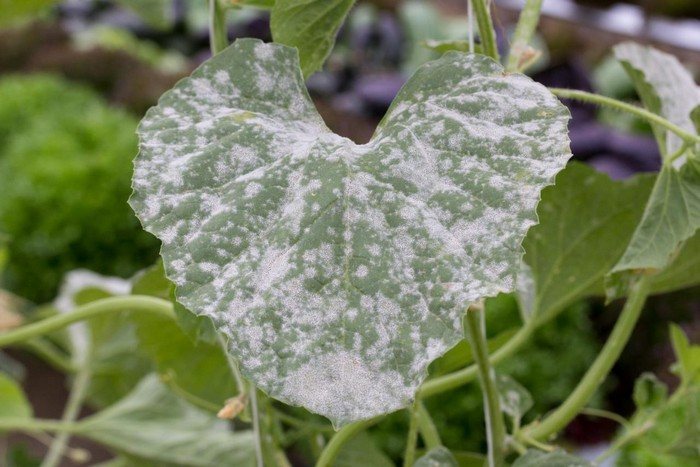
With powdery mildew, cucumber leaves begin to curl inward and turn yellow, and a characteristic fluffy, whitish coating forms on them. To get rid of the disease, special drugs are used:
- 40 g of copper oxychloride are diluted in a bucket of water and watered. You can also use a solution of colloidal sulfur;
- plants are sprayed with mullein infusion prepared in a ratio of 1 to 3;
- Another popular method is a mixture of 100 g of soda, 100 g of soap shavings and 10 liters of water.
Root rot
If a plant has suffered root rot, it can be recognized by the following signs:
- leaves begin to turn yellow, wither and fall off. There is also curling of the plate along the edges, and the leaves turn pale;
- the lesion begins from the lower part of the plant;
- the stem located directly above the ground becomes brown.
To prevent the occurrence of the disease, when planting, water the soil with a pink solution of potassium permanganate. Watering is done with warm water, the greenhouse is regularly ventilated.
If the disease appears, you can get rid of it by treating the cucumbers with Trichodermin or Previkur. After a week, the soil is watered using the drug Fitolavin. After restoration work, it is necessary to replenish the balance of useful elements with the help of fertilizing.
Ammonia burn
If the soil is fertilized with fresh manure or too much ammonium nitrate, then the plants are likely to get burned. The leaf blade curls at the edges and loses color.
You can help the plants with abundant watering, which will remove excess ammonia. Also, if fertilizers are located on the surface, they must be removed and the top layer of soil replaced.
Mosaic virus
If the leaves begin to curl and a mosaic pattern appears on them, this means that the cucumber has been exposed to viruses. In this case, it is impossible to cure the plant. If a problem is detected, you must immediately dig up and burn the diseased bush to prevent the spread of the disease.
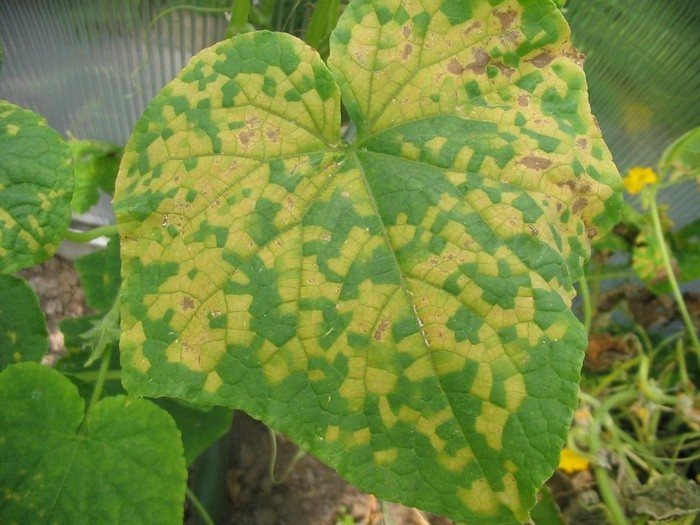
Most often, curled leaves indicate improper care of cucumbers. In addition, the plant may be exposed to diseases or pests. To determine the specific cause, you need to pay attention to the place where the sheet is curled, its color and density. If the problem is correctly identified, you can quickly react and prevent adverse consequences.



